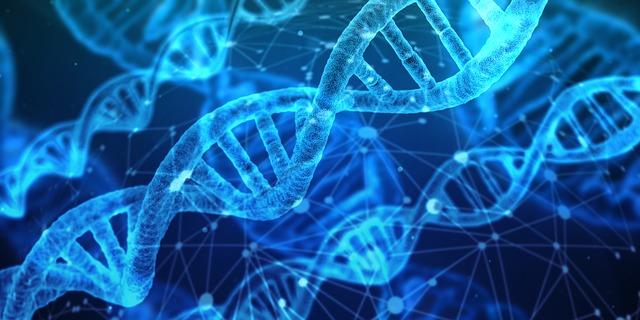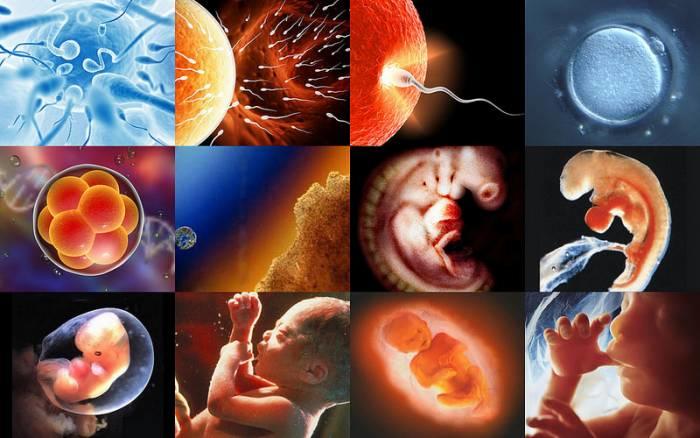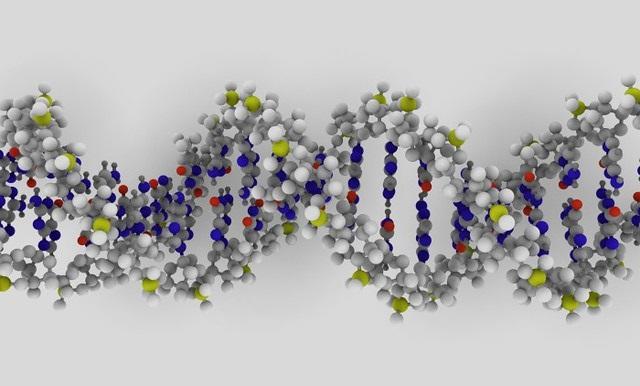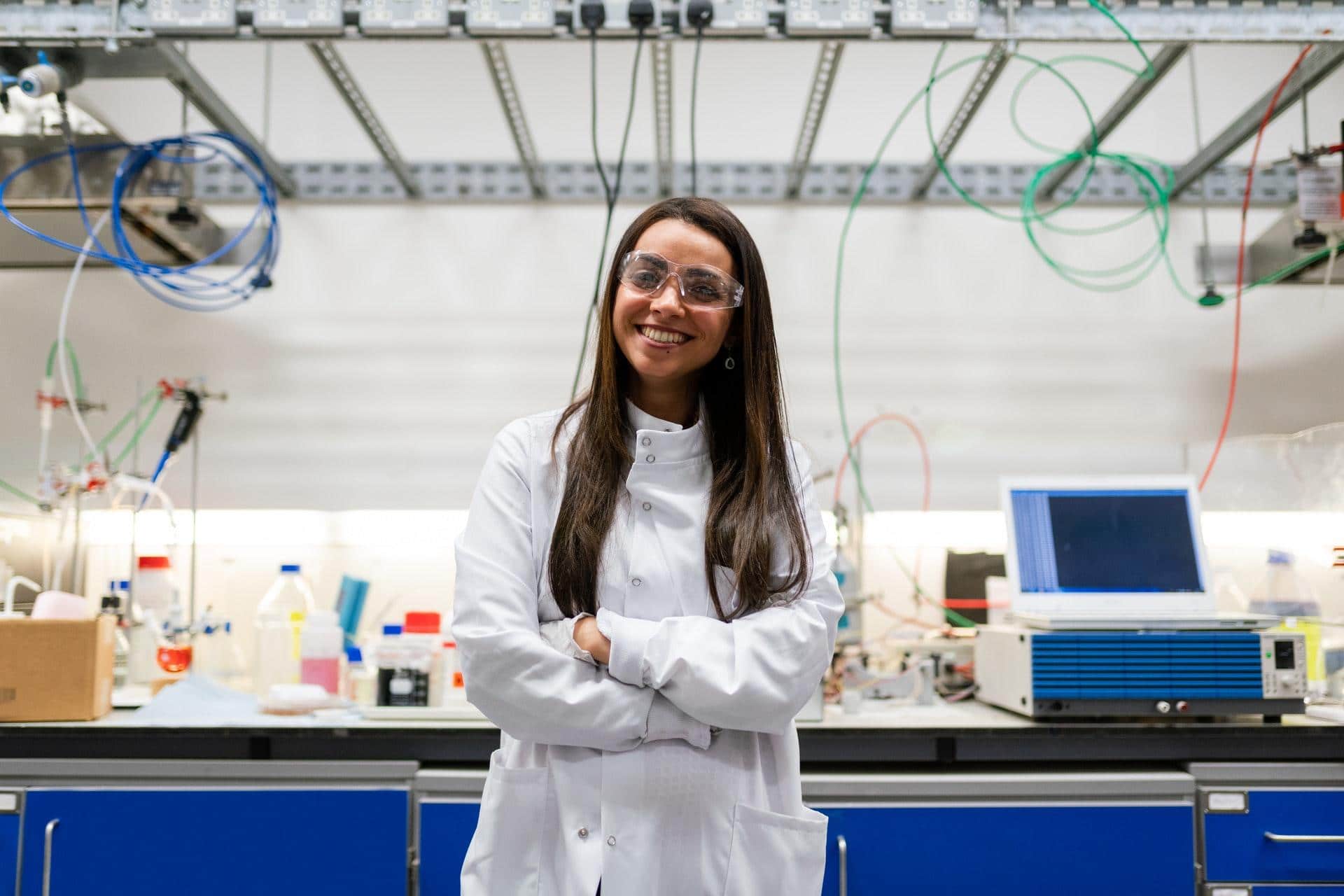
How Has Biological Research Enhanced Our Lives?
If you are a student or enthusiast of Biology, you are probably already familiar with the most important discoveries in the biology of recent times. However, are you aware of how biological advances have impacted our lives? The correct answer to this question would be, "Biological research has impacted our lives in unimaginable ways!" Get to know the importance of learning Biology with us!
Biology plays a crucial role in practically everything that surrounds us. Its study has allowed many advances in agriculture, medicine, the food industry, the development of new technologies, among many others! So, welcome to the beautiful world of science!
As you know, many advances in biological sciences result from years of research, scientists, and even ancient philosophers who dedicated their entire lives to studying the field of Biology. Even though we are sure that this article will not cover all of the advances that humanity has achieved until today, we are sure you will get to know some cool and vital facts that will blow your mind!

Discoveries of the mid-20th and 21st centuries
In the twentieth century, technological development came to modify our lives completely, and we could not fail to mention the impacts it caused on science and specifically in biology. For example, new technologies allowed a much more complex molecular biology study in the second half of the 20th century.
The study of DNA's structure and properties and the discovery of the genetic code marked the beginning of molecular biology from the 1950s. Discover with us the most important discoveries of biology for humanity!
Mass Production of Penicillin
Meanwhile, in the 1940s, Alexander Fleming was the driving force behind the mass production of penicillin, a group of antibiotics that were, and still are, effective against numerous bacterial infections. This discovery made possible the development of antibiotics that we know today, significantly reducing the number of deaths due to bacterial infections.
Although Fleming dates his discovery of the drug to the 1920s, his findings initially did not receive the desired attention. In 1940, Howard Florey began mass-producing the drug for pharmaceutical companies. The three leading investors in the discovery, Florey, Ernst Chain, and Fleming, shared the 1945 Nobel Prize in Medicine for their work.
The revolutionary discovery of DNA's structure
In the early 1950s, the American biologist James Watson and the British physicist Francis Crick proposed a double helix model of DNA (or deoxyribonucleic acid) made up of four nitrogenous bases, paired as follows: adenine (A) with thymine (T) and guanine (G) with cytokine (C). More or less around the same time, Rosalind Franklin, an expert chemist in X-ray crystallography, was a crucial piece in determining the structure of DNA since her technique identified the structures of proteins in the following way:
When X-rays expose the crystallized form of DNA, the atoms in the crystal deflect some of the rays forming a diffraction pattern and revealing the molecule's structure.
Watson and Crick gathered data from various researchers, including Franklin's discoveries, and in 1962, they received the Nobel Prize for determining the three-dimensional structure of DNA. Did you want a success story? Here you have a great example!
After the investigations of Watson and Crick, it was also possible to establish that DNA was responsible for protein synthesis. But, how this happens was unknown.
In 1958 this mechanism was discovered when Sydney Brenner, one of the most brilliant scientists of the 20th century and a winner of the Nobel Prize in Physiology and Medicine, made his contributions to gene regulation, protein synthesis, and apoptosis (commonly known as cells' death).
Advances in Reproductive Biology
John Rock, an American gynecologist, is an important figure in developing oral contraceptives. Between the 40s and 50s, Rock collaborated with Dr. Arthur Hertig and Dr. Gregory Pincus, focusing their research on the use of hormones to control ovulation in women. Their contributions to reproductive medicine synthesized the first oral contraceptive, commonly known as "The pill."
In 1963 Hershel Smith synthesized the norgestrel. Later, its biologically active component, levonorgestrel, was isolated. This hormone works by preventing the release of an egg, thus preventing fertilization. It also works by modifying the inner lining of the uterus to prevent the development of a pregnancy. Since then, a wide and safe variety of hormonal contraceptives have been created, reducing their side effects, such as hormonal imbalances and an increased risk of breast cancer.
In the 1970s, Rock's research was also crucial for IVF or in vitro fertilization, and together with biologist Miriam Menkin, both were the first to fertilize a human egg. Until 1978, the first human baby was born through IVF.
In the 70s, they also began to experiment with freezing embryos. Australian gynecologist Carl Wood is known as 'the father of IVF' as he pioneered the first IVF in 1983 from a frozen embryo.
Robert Edwards should also not go unnoticed due to his contributions to reproductive biology. Edwards received the Nobel Prize in Physiology and Medicine in 2010 for developing the in vitro fertilization technique and for the solution of fertility problems that affect 10% -15% of couples.

- IVF is a revolutionary contribution to Biology. Source: Faith @101 via VisualHunt / CC BY-SA.
Cracking the Genetic Code
Once all these experts in the field determined the DNA's structure and the mechanisms involving protein synthesis, the following question arose: Is there an established code that determines the specific functions to synthesize these proteins in all living organisms?
Exciting right? And the answer is: YES! The genetic code is responsible for converting the genetic information contained in the DNA. Subsequently, this genetic information is translated through the RNA (or ribonucleic acid) to convert amino acids into functional proteins. Very briefly, this means that an already predetermined instruction manual triggers all existing biological functions.
There are several relevant scientists whose contributions made possible the decoding of the genetic code. In 1959, Severo Ochoa and Arthur Kornberg were awarded the Nobel Prize for discovering how the synthesis of RNA and DNA. In 1961, Marshall Nirenberg discovered the first RNA triplet translated into an amino acid. By 1966, all the contributions and efforts of Nirenberg, Severo Ochoa, and Kornberg solved the genetic code. Another big step for science and a massive step for humanity!
The critical piece for the study of DNA: The PCR
Kary Mullis was the inventor of the notable PCR or polymerase chain reaction in 1985. PCR is a technique that allows amplifying a DNA fragment to obtain millions of copies to identify variations in its structure more easily. This invention revolutionized the field of genetic research in the 20th century to study pathogenic viruses, bacteria, parasites, genetic mutations, and related diseases. What would be the study of biology be without the famous PCR? Well, maybe without the use of the PCR, we would not have the tremendous scientific advances in biology, the biomedical sciences, and even archeology that we have achieved today!
Also, the PCR has been a crucial tool in the development of the Human Genome Project.
The Human Genome Project
To understand what we mean by the Human Genome Project, we have to go back to the very basics! First of all, what is a genome? A genome refers to the complete series of deoxyribonucleic acid (DNA) that makes up a living organism. In a nutshell, it is the genetic instruction manual that directs and regulates all the vital functions of all organisms. The genome is made up of nucleotide bases, which are adenine (A), thymine (T), guanine (G), and cytosine (C). The bases adenine (A) will always be paired with the thymine (T) and the cytosine (C) with the guanine (G).
The human genome contains approximately 3,000 million base pairs located on the chromosomes within the nucleus of all our cells!
Now, perhaps you remember that gene is a short segment of DNA. It is estimated that the human genome is made up of 30,000 genes! Did you imagine an organization system as complex as this one? Neither do us!
In 1990 the US government launched the famous Human Genome Project, which would sequence all human chromosomes. The project's main objectives were determining the human genetic sequence and creating physical and genetic maps of the entire human genome. In April 2003, the United States announced a finished version of the human genome.
So what is the use of knowing all this information? This research program is an excellent contribution to humanity since it allows obtaining specific genetic understanding about an individual. It will enable learning, for example, the origin of various pathologies and establishing the best and the most personalized diagnosis.

Let's talk about cloning.
The history of cloning has been a bit of an exciting path. In 1978, the Swiss Karl Illmensee and the American Peter Hoppe announced the cloning of a mouse through the transfer of embryonic cells. However, both researchers were accused of falsifying the results obtained.
In the 1990s, Ian Wilmut, an English embryologist, announced the famous birth of Dolly the sheep, the first specimen cloned from an adult cell taken from the udder of a sheep. However, it was not until 2000 that South Korean scientists Hwang Woo Suk claimed to clone a human embryo from cells taken from a woman, although the embryo was destroyed during the first stages of its division. A year later, the American company Advanced Cell Technology managed to clone a human embryo using the same methods as Dolly.
In the future of cloning, embryonic stem cells are expected to regenerate healthy tissues to replace injured tissues, as stem cell-derived tissues could function to evaluate new therapeutic alternatives. However, cloning raises somewhat controversial bioethical questions, mainly when its application to human beings could violate the principles of individual autonomy.
The Science of Nanotechnology
Nanotechnology is the science that controls matter at the atomic level. Scientists consider it the door to the new technological revolution because it can contribute to many different fields such as computer science, biology, or medicine. Modern nanotechnology began in 1981.
In medical research, nanotechnology could contribute to an early diagnosis and the treatment of various neurodegenerative diseases such as dementia, Alzheimer's disease, or cancer. One of the objectives of nanotechnology is to attack cancer cells selectively without causing side effects in the surrounding tissues, for example.
Also, nanotechnology can help control drug release so that the nanoparticles transport the drug to the site of action, reducing enzyme degradation and improving their safety and effectiveness.
Through nanotechnology, the regeneration of tissues could also be possible. The main objective of the nanoparticles is to synthesize substitute tissue to address visceral damage caused by some pathology or accident, thus avoiding a transplant, decreasing the risk of infection, and improving the patient's quality of life. However, suppose a transplant has already been carried out. In that case, these nanoparticles seek to avoid the risk of rejection by developing tissues from the patient's cells, cultivating them outside the body, and transplanting them later. Nevertheless, most of these studies are still in the experimental stage.

CRISPR: Clustered Regularly Interspaced Short Palindromic Repeats
CRISPR is one of the most revolutionary DNA technologies and is practically a genomic editing technique. It was developed in 2012 by Emmanuelle Charpentier and Jennifer Doudna, demonstrating infinite possibilities in medical research. Here's some biology vocabulary explained:
CRISPRs are repetitive DNA sequences that could defend against invading organisms. But how does this happen? CRISPRs use the Cas9 protein, which targets specific areas of DNA to "cut" it. By "cutting" a particular area, the gene at that location can be inactivated and edited in the desired way. The CRISPR are scissors with the most advanced technology!
CRISPR is a versatile and straightforward tool for editing DNA in any cell. And as you can imagine, this opens the door to a universe of possibilities, being useful in basic research to generate and study different models of diseases, up to the synthesis of transgenic organisms. For example, CRISPR could provide a new approach to cancer treatment by allowing these modifications in the genome. However, because it is an emerging technology, there is still a lot of uncertainty about the risk that this could unleash. Is a new era in medicine looming? Let's find out!
Protein Structuring through Artificial Intelligence
One of the biggest challenges in biology was predicting the three-dimensional shape in which a chain of amino acids will fold as it becomes a protein. Since the protein structure determines the biochemical functions of the protein, predicting its structure would help to study many of the mechanisms involved in the development of different pathologies and their possible treatment. And, thanks to technological advances, an artificial intelligence (AI) program called AI DeepMind finally predicted this three-dimensional shape. DeepMind Technologies is a British artificial intelligence research laboratory founded in September 2010 and acquired by Google in 2014.
The company DeepMind and the European Molecular Biology Laboratory (EMBL) seek to publish a complete database to predict and study the structures of all human proteins. Is science mixing science fiction with biology? In these times, everything is possible!
COVID-19: Creating Vaccines at Breakthrough Speed
What would be one of the latest technological advances if we do not mention all the efforts made in 2020 to find a vaccine against Covid-19 and stop a global pandemic?
After discovering the first known infections in Wuhan, China, Chinese researchers identified a new severe acute respiratory syndrome coronavirus 2 (SARS-CoV-2). After knowing the severity of the virus, the governments initiated a desperate global search for a vaccine against Covid-19.
Today, more than a year after the sanitary situation began, we already have several vaccines that reduce Covid -19 lethality, such as Pfizer-BioNTech, Johnson & Johnson's Janssen, AstraZeneca, Sputnik, among others, some showing efficiency of up to 95%. The vaccines developed until now reduce the risk of becoming seriously ill. However, they do not reduce its contagion.
Thanks to all the advances in medical research, scientists could develop the vaccine for Covid-19 incredibly in less than a year. The Covid-19 vaccine could be the fastest vaccine in history. If you were looking for a teamwork example, this is the one!
The Covid-19 pandemic accelerated the creation of synthetic messenger RNA (mRNA) vaccines, which had not been possibly developed until now, and not to mention that they reached the third phase of human testing in record time! Although the COVID-19 pandemic is not the first pandemic of the 21st century, we can be sure that humanity is more resilient than before!
As you can see, much of what we know about humans and the understanding of the world we live in comes from years and years of discovery, research, and trial and error. The last centuries have led us through various revolutionary discoveries, which will surely evolve even more in the upcoming years. Did you think science fiction was only possible in movies?
If you want to travel a little more to the past and find out more about the history of science and Biology, check out this article!


Alphabet soup: Test your Biology knowledge!
Now that you are familiarized with the latest groundbreaking biology discoveries and creations, let's do a brain-training activity! Are you ready to find 15 Biology concepts in this word search puzzle? Let's do it!
| A | Z | E | R | M | H | T | Y | X | I | O | L | M | F | G | P | D | Y | U | ! | G |
| C | Z | F | E | ? | S | D | R | F | H | Y | I | C | O | V | I | D | 1 | 9 | K | E |
| R | S | S | P | P | M | Y | G | H | U | Y | T | I | O | J | L | P | O | R | Q | N |
| I | V | F | R | B | I | O | L | O | G | Y | D | E | L | A | L | S | C | U | C | E |
| S | X | U | O | ? | F | V | Z | Y | E | S | D | F | G | H | J | K | L | M | L | T |
| P | ! | X | D | A | R | U | 4 | 5 | N | A | M | K | U | I | P | D | U | V | O | I |
| R | Z | R | U | N | E | L | ? | S | O | F | I | 9 | O | 8 | P | O | A | R | N | C |
| A | Y | H | C | R | A | A | N | O | M | R | O | S | I | T | O | L | C | R | I | C |
| A | W | K | T | A | M | T | V | E | E | P | E | N | I | C | I | L | L | I | N | O |
| X | J | P | I | R | O | I | 7 | M | O | S | N | F | R | I | D | Y | E | L | G | D |
| B | N | P | V | M | I | O | A | M | I | A | K | E | S | K | W | H | O | U | ? | E |
| G | E | M | E | A | M | N | T | E | M | R | T | P | I | R | I | N | O | L | O | E |
| Z | L | J | K | O | L | U | T | U | D | I | D | E | P | O | L | Y | H | U | I | O |
| N | A | N | O | T | E | C | H | N | O | L | O | G | Y | Z | B | U | I | P | L | M |
Using The Internet To Upgrade Your Biology Revision
If you are interested in more revolutionary discoveries in biology, do not hesitate to surf the net to enhance your Biology revision.
For example, if you want to get to know the latest Canadian research that has received the Novel Award, take a look at the recent discoveries here!
We assure you will feel very motivated to prepare yourself better for your upcoming exams. Now, if you are interested in pursuing your higher education in Biology, becoming a renowned scientist, and being awarded the Nobel Prize in science, you can find the best university program in Biology in Canada here!
Remember that for your study to be better, it is always recommended to complement your online study with Biology classes. Although some people can study independently, having a private biology tutor could also be a good idea for you.
Private tutoring: Do you want to know more about Biology?
Regardless of what you want to learn about biology, you can always consider going hand in hand with private tutoring and having personalized face-to-face or online biology courses adapted to your needs. Get the best Biology help through Superprof and find the best Biology tutor for you!
Are you living in Calgary? Near Churchill Falls or Cambridge Bay? Your postal code no longer matters! Through the platform of Superprof, you can find the best private biology tutors closest to you in Canada!
If you need extra school support for your Bachelor of Science in Biology, or you want to go deep into other Biology topics, join Superprof! Go to the official page of Superprof Canada, type that the subject you want to study is "Biology," and introduce the city where you are! Be part of a global community of private teachers and students, and learn with the best Biology tutoring!
Learning has never been so easy, personalized, and enjoyable as with Superprof! Find excellent biology courses and the best online biology tutor. Are you also feeling creative? To find out how art has impacted the history of Biology through the centuries!

Find out the Alphabet soup answers!
- Nanotechnology
- IVF
- Pill
- Covid 19
- Biology
- Genome
- CRISPR
- Dolly
- Cloning
- Genetic code
- Reproductive
- Penicillin
- DNA
- Human
- Ovulation
















